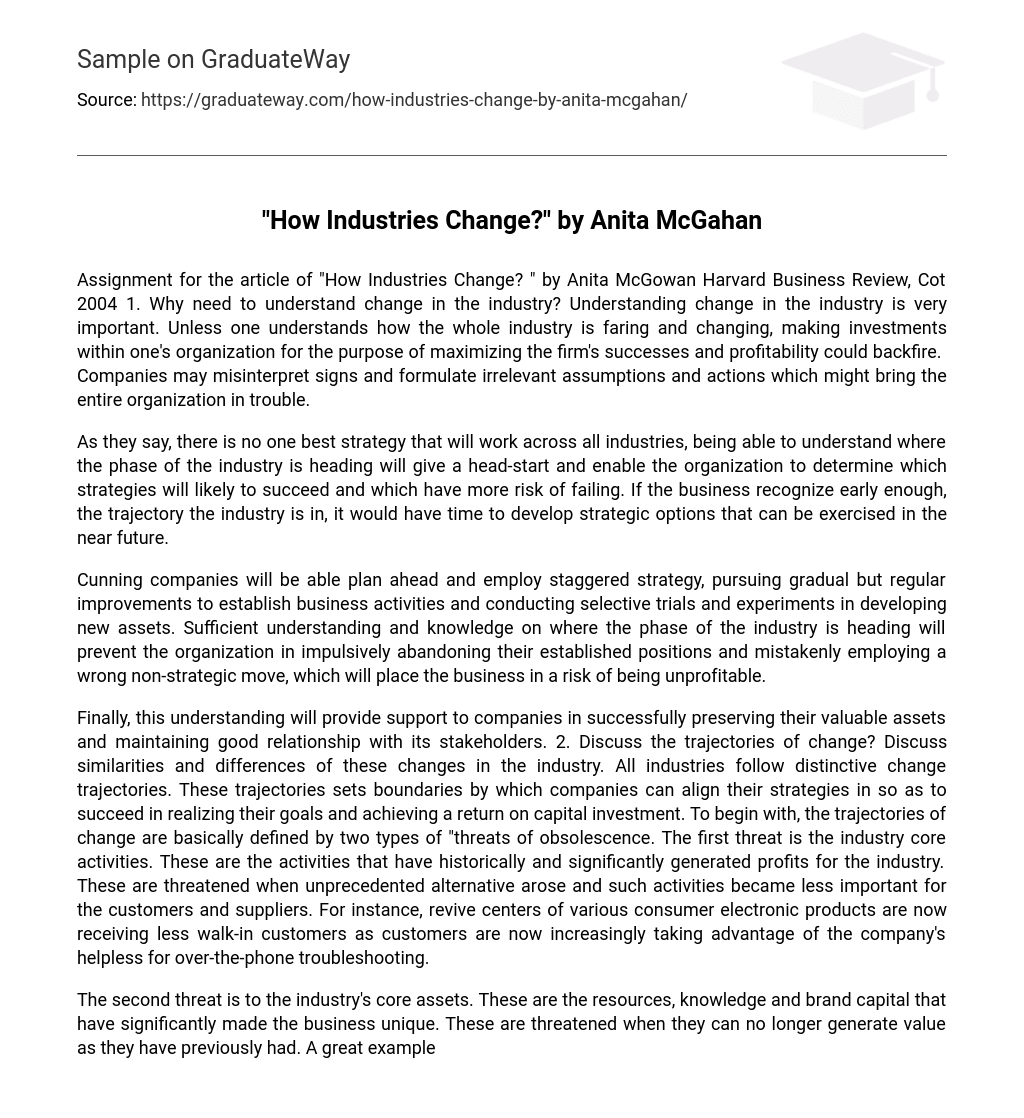Understanding change in the industry is very important. Unless one understands how the whole industry is faring and changing, making investments within one’s organization for the purpose of maximizing the firm’s successes and profitability could backfire. Companies may misinterpret signs and formulate irrelevant assumptions and actions which might bring the entire organization in trouble.
As they say, there is no one best strategy that will work across all industries, being able to understand where the phase of the industry is heading will give a head-start and enable the organization to determine which strategies will likely to succeed and which have more risk of failing. If the business recognize early enough, the trajectory the industry is in, it would have time to develop strategic options that can be exercised in the near future.
Cunning companies will be able plan ahead and employ staggered strategy, pursuing gradual but regular improvements to establish business activities and conducting selective trials and experiments in developing new assets. Sufficient understanding and knowledge on where the phase of the industry is heading will prevent the organization in impulsively abandoning their established positions and mistakenly employing a wrong non-strategic move, which will place the business in a risk of being unprofitable. Finally, this understanding will provide support to companies in successfully preserving their valuable assets and maintaining good relationship with its stakeholders.
Discuss similarities and differences of these changes in the industry. All industries follow distinctive change trajectories. These trajectories sets boundaries by which companies can align their strategies in so as to succeed in realizing their goals and achieving a return on capital investment. To begin with, the trajectories of change are basically defined by two types of “threats of obsolescence.
The first threat is the industry core activities. These are the activities that have historically and significantly generated profits for the industry. These are threatened when unprecedented alternative arose and such activities became less important for the customers and suppliers. For instance, revive centers of various consumer electronic products are now receiving less walk-in customers as customers are now increasingly taking advantage of the company’s helpless for over-the-phone troubleshooting.
The second threat is to the industry’s core assets. These are the resources, knowledge and brand capital that have significantly made the business unique. These are threatened when they can no longer generate value as they have previously had. A great example of this is the digital camera market. Canon, Nixon and even Samsung dealers are now selling 40% less units of digital cameras compared to the previous years cause of the increasing consumer demand for smartness that can also take good picture quality (SGF market share report – 2012).
There are basically four trajectories of change; Radical Change, Progressive, Creative and Intermediating. The trajectories of change are similar in a sense that they are defined only by two threats of obsolescence. However, they differ in characteristics. Radical change happens when both the core activities and core assets are threatened with obsolescence. This can happen when there is huge launching of a new trend in the market or when there are regulatory changes. What’s good about addict change is that it doesn’t happen overnight.
It happens gradually and therefore, companies have enough time to develop strategic options. The progressive change or transformation happens when neither the core assets nor core activities are threatened. Industries in this change are considered to be in minimal risk with the possibility of only minimal returns. However, the impact of accumulated changes can raise bars where some companies can only adopt and maintain competitiveness. Companies in the said industry must develop a system which will ultimately protect the compounding effects of the incremental hanged in their profits.
Creative transformation on the other hand is like a progressive change in that they have stable relationship with the suppliers and the customers. However, with creative change, the threat of obsolescence is with the industry core assets?core activities are stable. Lastly, the intermediating trajectory change occurs when core activities are threatened with obsolescence while the core assets retain their capacity to create value. Customer and supplier relationships are fragile but the business is still able to create value and uniqueness.





